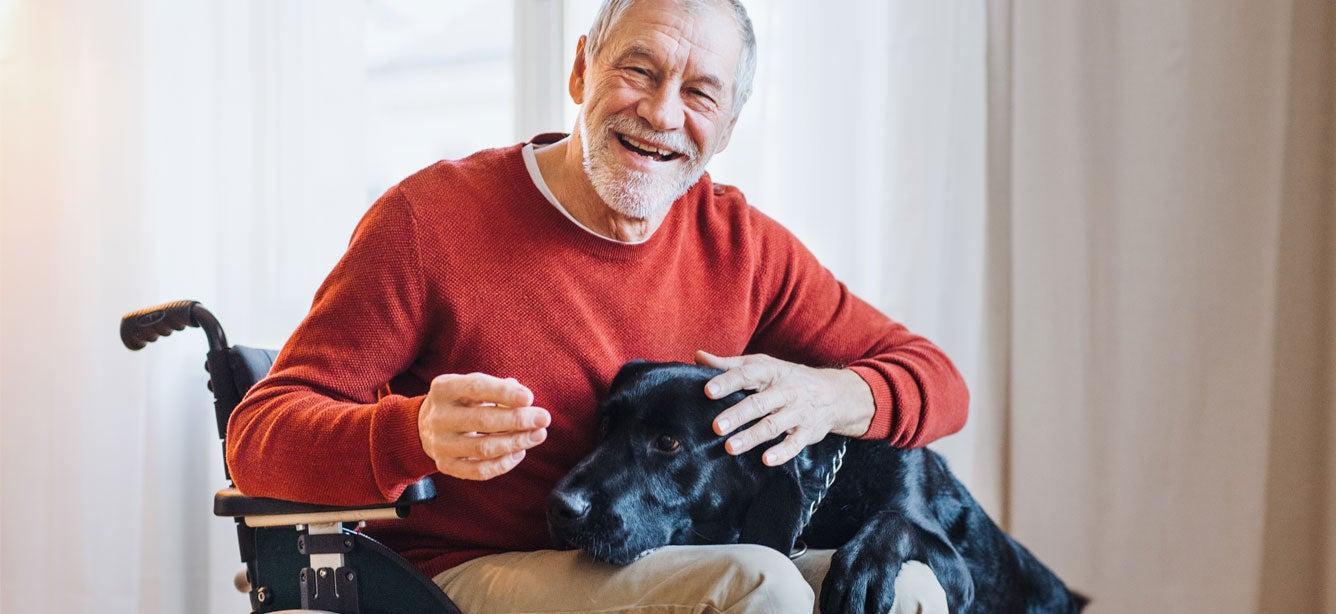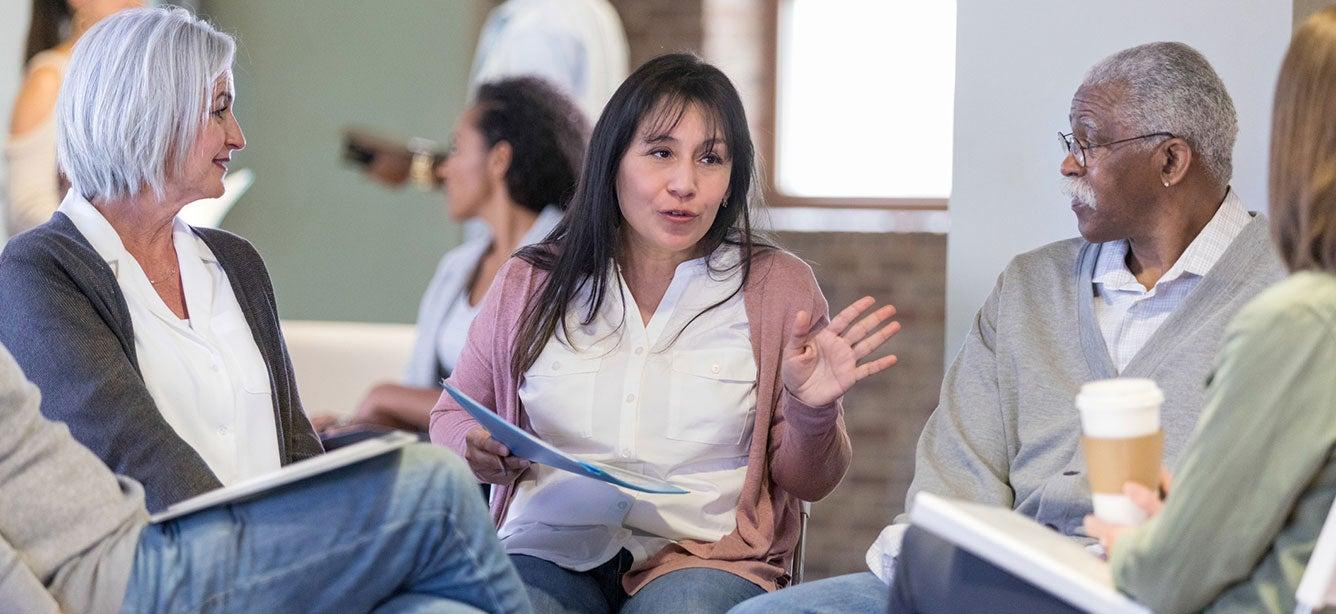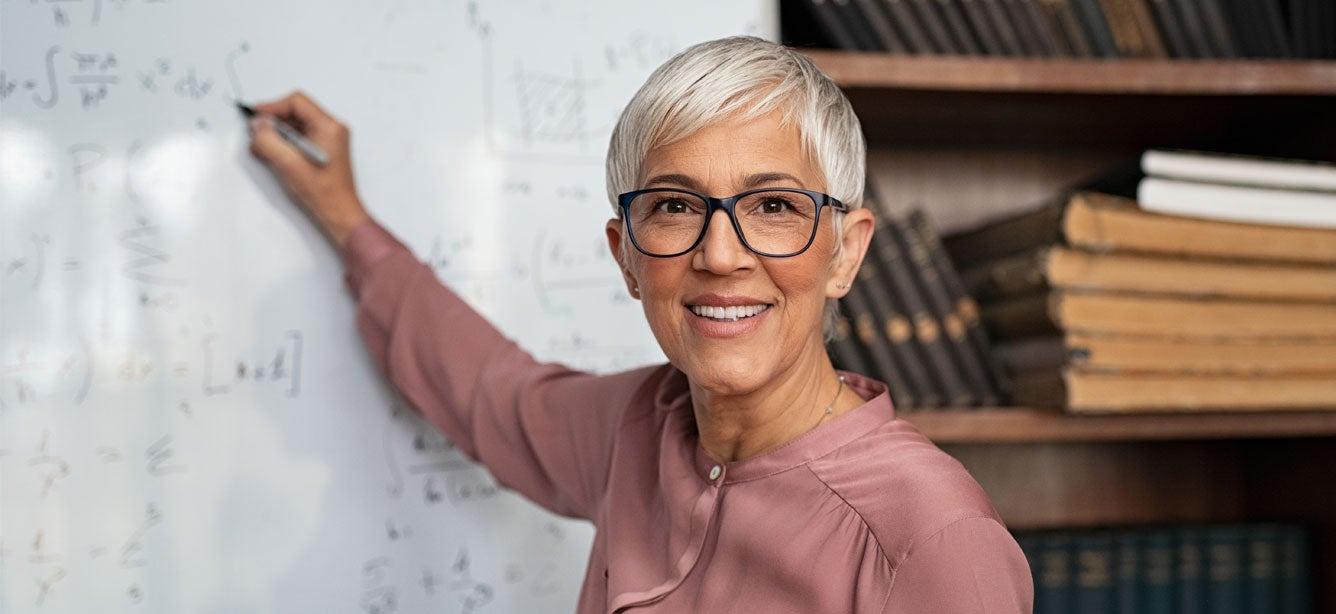Developing Partnerships with the Disability Community
7 min read

People with disabilities are more likely to experience poor health, including higher rates of cardiovascular disease and obesity, than those without disabilities. They are also less likely to have recommended health screenings to maintain a healthy life.1 Therefore, it is important to develop specific strategies and partnerships to engage people with disabilities in their communities, help them access health programs, and fully include them in evidence-based health promotion programs, such as Chronic Disease Self-Management Education (CDSME).
This fact sheet provides background on disability organizations that can serve as partners to help increase access to and use of evidence-based programs among people with disabilities. Key organizations that can help with your outreach and programmaticefforts are described below.
State Disability and Health Programs
State Disability and Health Programs are funded by the Centers for Disease Control and Prevention (CDC) through the National Center on Birth Defects and Developmental Disabilities (NCBDDD).2
Goals of State Disability and Health Programs
- Enhance program infrastructure and capacity
- Improve state level surveillance and monitoring activities
- Increase awareness of health-related disability policy initiatives
- Increase health promotion opportunities for people with disabilities
- Improve access to health care services for people with disabilities
- Improve emergency preparedness for people with disabilities
- Effectively monitor and evaluate program activities
As of 2020, there are 19 funded State Disability and Health Programs. The states are involved in many different initiatives to improve the health and quality of life among people with disabilities.
Examples of state and disability program activities
- Implementing the Stanford Chronic Disease Self-Management Program (CDSMP)
- Working with Federally Qualified Health Centers (FQHCs) to determine barriers for inclusiveness
- Supporting programs which improve healthcare outcomes for people with disabilities
- Working on statewide health action plans to include disability
- Promoting appropriate screening for people with disabilities
- Conducting health promotion workshops for people with disabilities and training individuals to advocate for their own health care
Learn more about State Disability and Health Program efforts on the CDC website.
Centers for Independent Living
Centers for Independent Living (CILs) are funded through the Administration for Community Living (ACL).3 CILs are nonprofit organizations focused on providing independent living services. CILs are required to have people with disabilities make up at least 51% of their board and staff.
Every CIL is required to perform five core functions:
- Information & Referral
- Independent Living Skills Training
- Peer Counseling
- Individual & Systems Advocacy
- Services that Facilitate Transitions
CILs are located in every state and territory. To locate the CILs in your state, visit the Independent Living Research Utilization (ILRU) Directory of CILs and Associations.
State Councils on Developmental Disabilities
Each state and territory has a disability network consisting of agencies and councils designed to serve and advocate for people with disabilities. The State Councils on Developmental Disabilities work to address identified needs by conducting advocacy, systems change, and capacity building efforts.
Key activities include conducting outreach, providing training and technical assistance, removing barriers, developing coalitions, encouraging citizen participation, and keeping policymakers informed about disability issues.4 For State Council program contacts, visit the Administration for Community Living.
State Mental Health Planning Councils
Additionally, each state and territory has a Mental Health Planning Council, which is comprised of consumer and family members.5 Mental Health Planning Councils ensure collaboration among key state agencies and facilitate consumer input into the state’s mental health services and activities.
Required members of Mental Health Planning Councils
- Representatives from state education, mental health, rehabilitation, criminal justice, housing, and social services agencies
- Adult members (consumers) who receive mental health services
- Family members of children with emotional disturbances
The Mental Health Planning Councils work with designated state agencies. Information on the state mental health programs can be found at the National Association of State Mental Health Program Directors website.
Consortium for Citizens with Disabilities
Another source of referrals for people with disabilities are the local or state chapter/affiliates of national disability organizations, which serve specific disability populations. The Consortium of Citizens with Disabilities (CCD) has many member organizations, each with local or state chapters/affiliates. CCD is a coalition of national consumer, advocacy, provider, and professional organizations that advocates on behalf of people of all ages with physical and mental disabilities and their families. 6
The organizations that make up CCD represent a wide variety of disabilities—physical, sensory, intellectual, psychological, and developmental. These disabilities include blindness or low vision, amputations, autism, brain injury, paralysis, learning disabilities, epilepsy, behavioral health, Down syndrome, multiple sclerosis, and cerebral palsy. For a complete list of member organizations for CCD, visit the CCD website.
National Center on Health, Physical Activity and Disability
The National Center on Health, Physical Activity and Disability (NCHPAD), a public health practice and resource center on health promotion for people with disabilities, supports many local programs and organizations. The Center helps people with disabilities and chronic health conditions achieve health benefits through increased participation in physical and social activities, referrals, and consultation services.7
NCHPAD houses directories aimed at helping people with disabilities maintain their health. Both of these directories are searchable by state and city.
American Association on Health and Disability
The mission of the American Association on Health and Disability (AAHD) is to advance health promotion and wellness initiatives for children and adults with disabilities.8 AAHD maintains information on state health and disability resources in each state, as well as other public and private disability resources for most states.
AAHD’s Health and Disability State Resources directory contains information on a variety of state programs to assist individuals with disabilities. The listing includes state agencies on independent living, mental health, intellectual and developmental disabilities, substance abuse services, and vocational rehabilitation.
National Disability Navigator Resource Collaborative—Community Outreach Collaboratives
The National Disability Navigator Resource Collaborative (NDNRC) provides training and technical assistance on disability issues for navigators and other enrollment specialists assisting individuals who enroll in health insurance through the Affordable Care Act (ACA) Marketplace. As part of this project, the NDNRC developed the Community Outreach Collaborative (COC) initiative to act as a bridge between the navigator organizations and the disability community.
The COCs provide referrals for individuals with disabilities looking for consumer assistance with healthcare enrollment and can serve as a potential source to refer individuals with disabilities to evidence-based programs. Visit the NDNRC website for the list of COCs.
Other community organizations
People with disabilities can be found in settings throughout the community and are involved in a wide variety of activities. Therefore, efforts to recruit individuals with disabilities should include other community organizations, such as the YMCA as well as faith communities. Finding people where they live, work, play, and pray is an effective recruitment effort in general and applies just as equally to people with disabilities.
Retention is important: Keep accepting people with disabilities
Finally, it is important to remember that recruiting people with disabilities for evidence-based programs will be a success only if they attend the program regularly or receive the “adequate dose” to obtain the benefits. To retain people with disabilities in your programs, you must be sure that your program is fully accessible and accepting for people with disabilities. Successful recruitment efforts alone are not enough if the individuals do not return to the program because the meeting room or materials are not accessible. For a complete list of tips for disability etiquette and accessibility/accommodations, review our fact sheet, Engaging People with Disabilities in Evidence-Based Programs.
This project was supported, in part by grant number 90CR2001-01-00 from the U.S. Administration for Community Living, Department of Health and Human Services, Washington, D.C. 20201. Grantees undertaking projects under government sponsorship are encouraged to express freely their findings and conclusions. Points of view or opinions do not, therefore, necessarily represent official Administration for Community Living policy.
Sources
1. National Council on Aging. Engaging People with Disabilities in Evidence-Based Programs. Found on the internet at https://www.ncoa.org/article/tip-sheet-engaging-people-with-disabilities-in-evidence-based-programs
2. Centers for Disease Control and Prevention. Disability and Health State Programs. Found on the internet at https://www.cdc.gov/ncbddd/disabilityandhealth/programs.html
3. U.S. Administration for Community Living. Centers for Independewnt Living. Found on the internet at https://acl.gov/programs/aging-and-disability-networks/centers-independent-living
4. U.S. Administration for Community Living. About the Administration on Disabilitlies. Found on the internet at https://acl.gov/about-acl/administration-disabilities
5. U.S. Substance Abuse and Mental Health Services Administration. Community Mental Health Services Block Grant. Found on the internet at https://www.samhsa.gov/grants/block-grants/mhbg
6. Consortium for Constituents with Disabilities (CCD). Found on the internet at http://www.c-c-d.org/
7. National Center on Health, Physical Activity and Disability (NCHPAD). Found on the internet at https://www.nchpad.org/
8. American Association on Health & Disability. Found on the internet at https://aahd.us/



